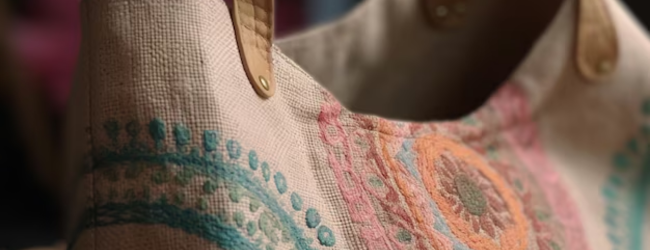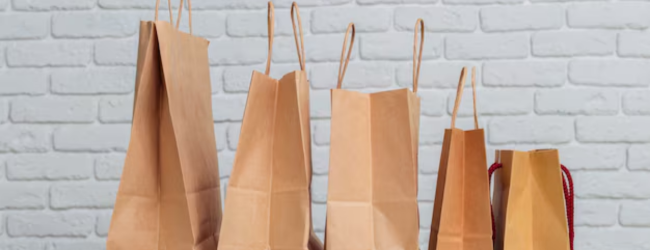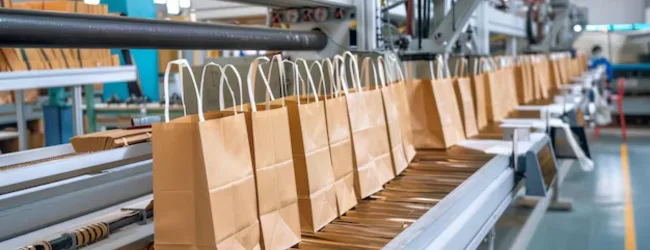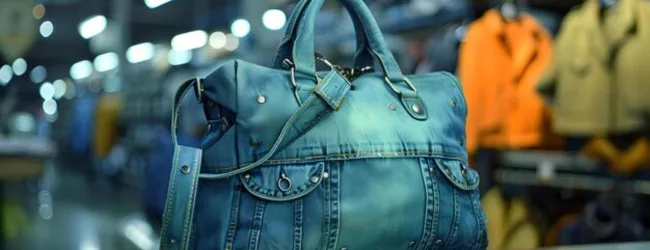Table of contents
- Why Start a Bag Manufacturing Business in India Now?
- Startup Cost Breakdown
- Profit Margins in Bag Manufacturing Business
- 1. Market Research and Niche Identification
- 2. Business Plan and Legal Requirements
- 3. Infrastructure and Machinery
- 4. Production and Quality Control
- 5. Marketing and Sales
- 6. Financial Management and Growth
- Need Expert Guidance?
- Conclusion
- Frequently Asked Questions (FAQs)
India’s booming retail and e-commerce sectors, coupled with a growing awareness of sustainable alternatives to plastic, present a golden opportunity for entrepreneurs looking to start a bag manufacturing business. This guide will walk you through the essential steps to launch and scale a successful venture
Why Start a Bag Manufacturing Business in India Now?

- Surging Demand for Sustainable Alternatives:
- India’s government is actively promoting the reduction of single-use plastics. Stricter regulations and bans are creating a massive demand for eco-friendly alternatives like jute, cotton, and non-woven bags.
- Consumers are increasingly conscious of their environmental footprint, driving a shift towards sustainable products. This trend is only expected to grow.
- Booming Retail and E-commerce Sectors:
- The rapid growth of India’s retail and e-commerce industries is creating a substantial need for various types of bags for packaging, transportation, and branding.
- Online shopping is becoming increasingly popular, requiring reliable and aesthetically pleasing packaging solutions.
- Government Support for MSMEs:
- The Indian government offers numerous schemes and incentives to support micro, small, and medium enterprises (MSMEs), including financial assistance, subsidies, and tax benefits.
- Programs like “Make in India” encourage domestic manufacturing and provide opportunities for entrepreneurs.
- Abundant Raw Material Availability:
- India is a major producer of cotton, jute, and other natural fibers, providing easy access to raw materials for bag manufacturing.
- The textile industry within India is well established, and provides many resources.
- Growing Export Potential:
- The global demand for sustainable and ethically produced bags is increasing, creating opportunities for Indian manufacturers to export their products.
- Indias geographical location, and manufacturing capabilities provide a strong export opportunity.
- Customization and Personalization Trend:
- There’s a rising demand for customized bags for corporate gifting, promotional events, and personalized use.
- This trend allows manufacturers to offer unique and high-value products.
Startup Cost Breakdown
It’s important to remember that these figures are estimates and can vary significantly based on location, scale, and materials.
1. Land and Building (Rental/Purchase):
- Rental for a small industrial space (1,000-2,000 sq. ft.): ₹50,000 – ₹1,50,000 per month.
- Purchase of land and construction: ₹20 lakhs – ₹50 lakhs (or more, depending on location).
2. Machinery and Equipment:
- Industrial sewing machines (5-10 units): ₹2 lakhs – ₹5 lakhs.
- Cutting machines: ₹50,000 – ₹1.5 lakhs.
- Printing/embroidery machines: ₹1 lakh – ₹3 lakhs.
- Quality control equipment: ₹50,000 – ₹1 lakh.
- Other equipment (tables, racks, etc.): ₹50,000 – ₹1 lakh.
3. Raw Materials (Initial Stock):
- Fabric (cotton, jute, non-woven): ₹2 lakhs – ₹5 lakhs.
- Accessories (zippers, buttons, handles): ₹50,000 – ₹1 lakh.
4. Legal and Registration Fees:
- Business registration, GST registration, licenses: ₹20,000 – ₹50,000.
5. Working Capital (Initial Operating Expenses):
- Salaries (employees): ₹1 lakh – ₹2 lakhs (for the first few months).
- Utilities (electricity, water): ₹20,000 – ₹50,000 per month.
- Marketing and advertising: ₹50,000 – ₹1 lakh.
- Transportation and logistics: ₹30,000 – ₹70,000.
- Contingency funds: 1 lakh.
6. Miscellaneous Expenses:
- Office supplies, furniture, etc: 50,000.
Total Estimated Startup Cost:
- ₹8 lakhs – ₹25 lakhs (for rental setup).
- ₹30 lakhs to 60+ lakhs (for purchasing land and building).
Key Considerations:
- Scale of Operation: Starting with a smaller scale can significantly reduce initial costs.
- Used Machinery: Purchasing used machinery can be a cost-effective option.
- Government Schemes: Explore government schemes that offer financial assistance to MSMEs.
- Phased Investment: Consider a phased investment approach, starting with essential equipment and gradually expanding as your business grows.
Profit Margins in Bag Manufacturing Business

Profit margins in the bag manufacturing sector can vary considerably based on several factors:
- Type of Bag:
- Luxury bags with high-quality materials and intricate designs typically command higher profit margins (30-50% or more).
- Basic utility bags (e.g., cotton tote bags, non-woven shopping bags) tend to have lower profit margins (10-25%).
- Specialized industrial or medical bags might have varying margins depending on the specifications.
- Materials Used:
- High-end materials like genuine leather or organic cotton will increase production costs, but also allow for higher selling prices and potentially better margins.
- Lower-cost materials like non-woven fabrics or recycled materials can improve margins if managed efficiently.
- Production Efficiency:
- Streamlined production processes, minimal waste, and efficient labor utilization can significantly impact profit margins.
- Automation and optimized workflows can reduce production costs and increase profitability.
- Sales Channels:
- Direct sales to consumers (e.g., through online stores or retail outlets) can yield higher margins than selling through wholesalers or distributors.
- Exporting can also offer better margins, but involves additional costs and complexities.
- Corporate orders often provide good profit margins, due to bulk order volumes.
- Branding and Customization:
- Strong branding and unique designs can justify higher selling prices and improve profit margins.
- Customization services (e.g., printing, embroidery) can add value and increase profitability.
- Order Quantity:
- Bulk orders typically lead to a reduced per unit cost, boosting margins.
General Profit Margin Expectations:
- Small-scale manufacturers: Can expect profit margins ranging from 15% to 30%, depending on the factors mentioned above.
- Larger-scale manufacturers: With efficient production and established sales channels, can achieve profit margins of 25% to 40% or more.
Key Strategies to Maximize Profit Margins:
- Cost Optimization:
- Negotiate favorable prices with raw material suppliers.
- Minimize waste and optimize production processes.
- Implement energy-efficient practices.
- Value Addition:
- Offer customization services.
- Develop unique designs and branding.
- Focus on high-quality materials and craftsmanship.
- Strategic Pricing:
- Conduct thorough market research to determine competitive pricing.
- Implement dynamic pricing strategies based on demand and market conditions.
- Efficient Inventory Management:
- Avoid overstocking, and minimize storage costs.
- Direct Sales:
- Explore direct-to-consumer sales channels to cut out middlemen.
1. Market Research and Niche Identification

- Detailed Demand Analysis:
- Consumer Behavior: Analyze the shift towards sustainable products. Conduct surveys or focus groups to understand consumer preferences regarding materials, designs, and functionality.
- Industry-Specific Needs: Research the specific requirements of different industries (retail, hospitality, education, corporate). For example, hotels need laundry bags and reusable shopping bags, while schools need backpacks and tote bags.
- E-commerce Trends: Track the growth of online retail and identify the types of bags that are popular on e-commerce platforms. Analyze customer reviews and ratings to understand customer satisfaction and pain points.
- Government Policies: Stay updated on government regulations related to plastic usage and environmental protection. This will help you identify opportunities in eco-friendly bag manufacturing.
- Data Analysis: Use tools like Google Trends, market research reports, and industry publications to gather data on market size, growth rate, and trends.
- Niche Specialization:
- Luxury Bags: Focus on high-quality materials, craftsmanship, and exclusive designs. Target affluent customers and luxury retailers.
- Industrial Bags: Produce heavy-duty bags for construction, agriculture, and manufacturing industries.
- Medical Bags: Manufacture specialized bags for hospitals and clinics, such as medical waste bags and instrument bags.
- Customization: Offer customized bags for corporate gifting, promotional events, and personalized orders. Invest in printing and embroidery equipment.
- Geographic Targeting: Focus on specific regions or cities with high demand for particular types of bags.
- Competitive Analysis Breakdown:
- SWOT Analysis: Conduct a SWOT (Strengths, Weaknesses, Opportunities, Threats) analysis of your competitors.
- Pricing Strategy: Analyze your competitor’s pricing strategies and identify opportunities to offer competitive prices.
- Distribution Channels: Identify your competitor’s distribution channels and explore alternative channels to reach a wider audience.
- Online Presence: Analyze competitors online presence. How are they marketing their products online?
ALSO READ | How to Start Wire Manufacturing Business? Earn Crores in 10 Easy Steps
2. Business Plan and Legal Requirements
- Detailed Business Plan Components:
- Executive Summary: A concise overview of your business plan.
- Company Description: Details about your business structure, mission, and vision.
- Market Analysis: In-depth analysis of your target market and competitors.
- Product and Service Description: Detailed information about your product range and customization options.
- Marketing and Sales Strategy: Outline your marketing and sales plan, including online and offline strategies.
- Operational Plan: Details about your production process, quality control measures, and inventory management.
- Financial Plan: Financial projections, including startup costs, operating expenses, revenue forecasts, and funding sources.
- Management Team: Information about your management team and their experience.
- Legal Compliance Breakdown:
- GST Registration: Understand the GST rates and compliance requirements for bag manufacturing.
- Factory License: If you are setting up a manufacturing unit, you will need a factory license from the local authorities.
- Pollution Control Certificates: Obtain necessary certificates from the pollution control board to ensure compliance with environmental regulations.
- Labor Laws: Ensure compliance with labor laws, including minimum wage, working hours, and employee benefits.
- Intellectual Property Protection: Protect your designs and brand name by registering trademarks and patents.
- Export Licenses: If you plan to export your bags, obtain necessary export licenses and certifications.
3. Infrastructure and Machinery

- Location Considerations:
- Proximity to Raw Materials: Choose a location close to suppliers of raw materials to reduce transportation costs.
- Availability of Skilled Labor: Ensure access to a skilled workforce with experience in bag manufacturing.
- Transportation Infrastructure: Choose a location with good transportation infrastructure to facilitate the movement of raw materials and finished goods.
- Government Incentives: Explore government incentives and subsidies for setting up manufacturing units in specific regions.
- Machinery Specifications:
- Sewing Machines: Invest in industrial sewing machines with different stitch types and speeds.
- Cutting Machines: Choose cutting machines that can handle different types of fabrics and materials.
- Printing Machines: Select printing machines based on the types of prints you want to offer (screen printing, digital printing, etc.).
- Quality Control Equipment: Invest in equipment for testing fabric strength, colorfastness, and other quality parameters.
- Automation: Explore automation options to increase production efficiency and reduce labor costs.
- Raw Material Sourcing:
- Direct from Mills: Sourcing directly from textile mills can help reduce costs.
- Wholesale Markets: Explore wholesale markets for fabrics and accessories.
- Online Platforms: Utilize online platforms to find suppliers of raw materials.
- Sustainable Sourcing: Prioritize sustainable sourcing of raw materials to meet the growing demand for eco-friendly products.
💡 Pro Tip: If you want to start a business but have too many doubts, connect with a business expert from Boss Wallah for guidance – https://bw1.in/1116
4. Production and Quality Control
- Lean Manufacturing: Implement lean manufacturing principles to minimize waste and maximize efficiency.
- Standard Operating Procedures (SOPs): Develop SOPs for each stage of production to ensure consistency and quality.
- Statistical Process Control (SPC): Use SPC techniques to monitor and control the production process.
- Quality Management System (QMS): Implement a QMS, such as ISO 9001, to ensure consistent quality.
- Inventory Management Systems: Use inventory management software to track raw materials, work-in-progress, and finished goods.
5. Marketing and Sales

- Digital Marketing:
- Search Engine Optimization (SEO): Optimize your website and content for relevant keywords.
- Social Media Marketing: Utilize social media platforms to engage with your target audience and promote your products.
- Email Marketing: Build an email list and send targeted emails to promote your products and offers.
- Influencer Marketing: Partner with influencers to promote your products to their followers.
- Paid Advertising: Use paid advertising platforms, such as Google Ads and social media ads, to reach a wider audience.
- Offline Sales Channels:
- Distributors and Wholesalers: Partner with distributors and wholesalers to reach a wider network of retailers.
- Corporate Sales: Develop relationships with corporate clients to provide customized bags for their needs.
- Retail Partnerships: Partner with retail stores to sell your bags.
- Exporting: explore exporting your bags to other countries.
- Branding and Customer Relationship Management (CRM):
- Brand Storytelling: Craft a compelling brand story that resonates with your target audience.
- Customer Feedback: Collect customer feedback and use it to improve your products and services.
- Loyalty Programs: Implement loyalty programs to reward repeat customers.
6. Financial Management and Growth
- Financial Modeling: Develop detailed financial models to project your revenue, expenses, and profitability.
- Funding Options:
- Bank Loans: Explore loan options from banks and financial institutions.
- Government Schemes: Take advantage of government schemes and subsidies for small and medium-sized enterprises (SMEs).
- Venture Capital: If you have a high-growth potential, consider seeking venture capital funding.
- Angel Investors: Seek funding from angel investors who are interested in investing in early-stage companies.
- Growth Strategies:
- Product Diversification: Expand your product range to cater to different customer needs.
- Market Expansion: Explore new markets and geographic regions.
- Strategic Partnerships: Partner with other businesses to expand your reach and capabilities.
- Acquisitions: Consider acquiring other bag manufacturing businesses to accelerate your growth.
Need Expert Guidance?
Starting a business can be challenging, but you don’t have to do it alone! At Boss Wallah, our 2,000+ business experts are ready to provide valuable insights and guidance. Whether you need help with marketing, finance, sourcing, or any other area of any business, our business experts are here to help you succeed- https://bw1.in/1116
Confused about Which Business to Start?
Want to start your own business but unsure which one to choose? Explore Boss Wallah, where you’ll find 500+ courses by successful business owners, featuring practical, step-by-step guides on starting and growing various businesses.
Find your perfect business idea today – https://bw1.in/1111
Conclusion
Starting a successful bag manufacturing business in India requires careful planning, market research, and a commitment to quality. By focusing on sustainability, innovation, and customer satisfaction, you can capitalize on the growing demand for bags and build a thriving business.
Frequently Asked Questions (FAQs)
- What is the initial investment required to start a bag manufacturing business in India?
- The initial investment varies depending on the scale of operation, machinery, and raw materials. It can range from a few lakhs to several crores.
- What are the essential licenses and permits required?
- GST registration, factory license (if applicable), pollution control certificates, and MSME registration.
- What types of bags are in high demand in India?
- Jute bags, cotton bags, non-woven bags, backpacks, and travel bags are in high demand, along with customized bags for corporate gifting.
- How can I market my bag manufacturing business effectively?
- Utilize online platforms, participate in trade shows, and develop relationships with retailers and corporate clients.
- What are the key factors to consider when choosing a location for my manufacturing unit?
- Accessibility, availability of raw materials, labor costs, and proximity to transportation hubs.
- How can I ensure quality control in my production process?
- Implement quality control measures at every stage of production, conduct regular inspections, and train your workforce.
- What are the profit margins in the bag manufacturing business?
- Profit margins vary, but focus on cost optimization and efficient production to maximize profitability.
- How do I find reliable raw material suppliers?
- Attend industry trade shows, network with other manufacturers, and research online directories.


